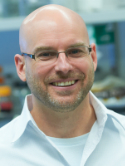Homologous recombination during meiosis Book Section
| Authors: | Thacker, D.; Keeney, S. |
| Editors: | Hanaoka, F.; Sugasawa, K. |
| Article/Chapter Title: | Homologous recombination during meiosis |
| Abstract: | In most sexually reproducing organisms, homologous recombination is a hallmark of meiotic cellular division. Central to this process is the formation and repair of developmentally programmed DNA double-strand breaks (DSBs). Cytotoxic lesions such as DSBs are hazardous, potentially mutagenic events that can compromise cellular function. However, during meiosis DSBs are required to establish physical connections between homologous maternal and paternal chromosomes. These connections are essential for the reduction and accurate transfer of genetic information from progenitor cell to each gamete. In the absence of recombination, homologous chromosomes are prone to missegregation at the first meiotic division resulting in the production of aneuploid gametes, which is the leading cause of miscarriages in humans and the cause of genetic disorders such as Down’s, Turner’s, and Klinefelter’s syndromes. Here, we review major steps along the recombination pathway, highlighting the mechanisms that regulate DSB formation and repair and the specialized chromosomal structures that are important for this process. For simplicity, we focus primarily on meiotic recombination in the budding yeast, Saccharomyces cerevisiae, which has proven to be a rich source of information regarding the mechanisms and regulation of this process. © Springer Japan 2016. |
| Keywords: | chromosome structure; synaptonemal complex; meiosis; chromatin; dna double-strand break repair; recombination; spo11; cell cycle checkpoints |
| Book Title: | DNA Replication, Recombination, and Repair: Molecular Mechanisms and Pathology |
| ISBN: | 978-4-431-55871-2 |
| Publisher: | Springer |
| Publication Place: | Tokyo, Japan |
| Date Published: | 2016-01-01 |
| Start Page: | 131 |
| End Page: | 151 |
| Language: | English |
| DOI: | 10.1007/978-4-431-55873-6_6 |
| PROVIDER: | scopus |
| DOI/URL: | |
| Notes: | Book Chapter: 6 -- Export Date: 4 April 2016 -- Source: Scopus |
Altmetric
Citation Impact
BMJ Impact Analytics
Related MSK Work




